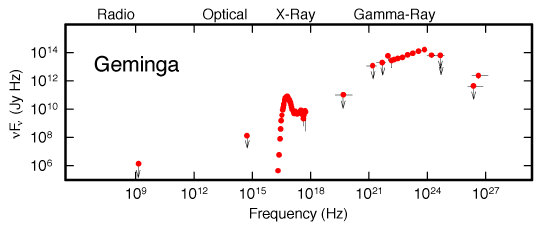Spectrum of Geminga (Credit: D.J. Thompson (NASA/GSFC)
(Credit: D.J. Thompson (NASA/GSFC)
Although it is a neutron star like other pulsars, Geminga is unusual in having little (if any) observable radio emission. This power spectrum, extending across all forms of radiation from radio to gamma rays, shows that Geminga has two principal radiation components: in the X-ray band, the "bump" indicates a thermal component, possibly a hot spot where the dipole magnetic field lines converge; in the gamma-ray band, which dominates the observed emission, the spectrum indicates radiation by high-energy particles that are accelerated by the huge electric and magnetic fields of the spinning neutron star. The nature of the drop-off at the upper end of the gamma-ray spectrum remains a mystery. Click here gif version
IMAGES |
By Mission |
Stars |
HEASARC Home | Observatories | Archive | Calibration | Software | Tools | Students/Teachers/Public Last modified: Thursday, 26-Jun-2003 13:48:45 EDT |

